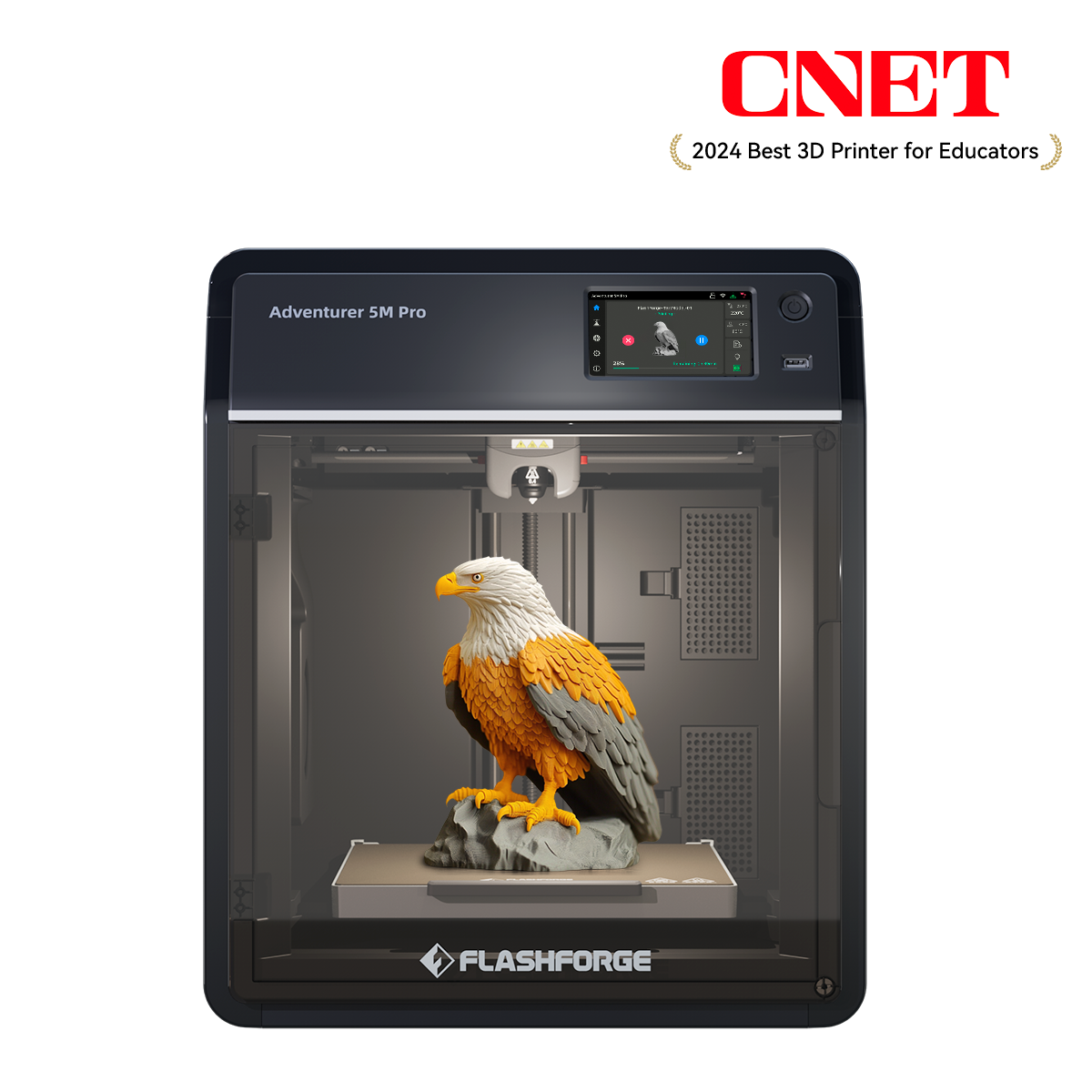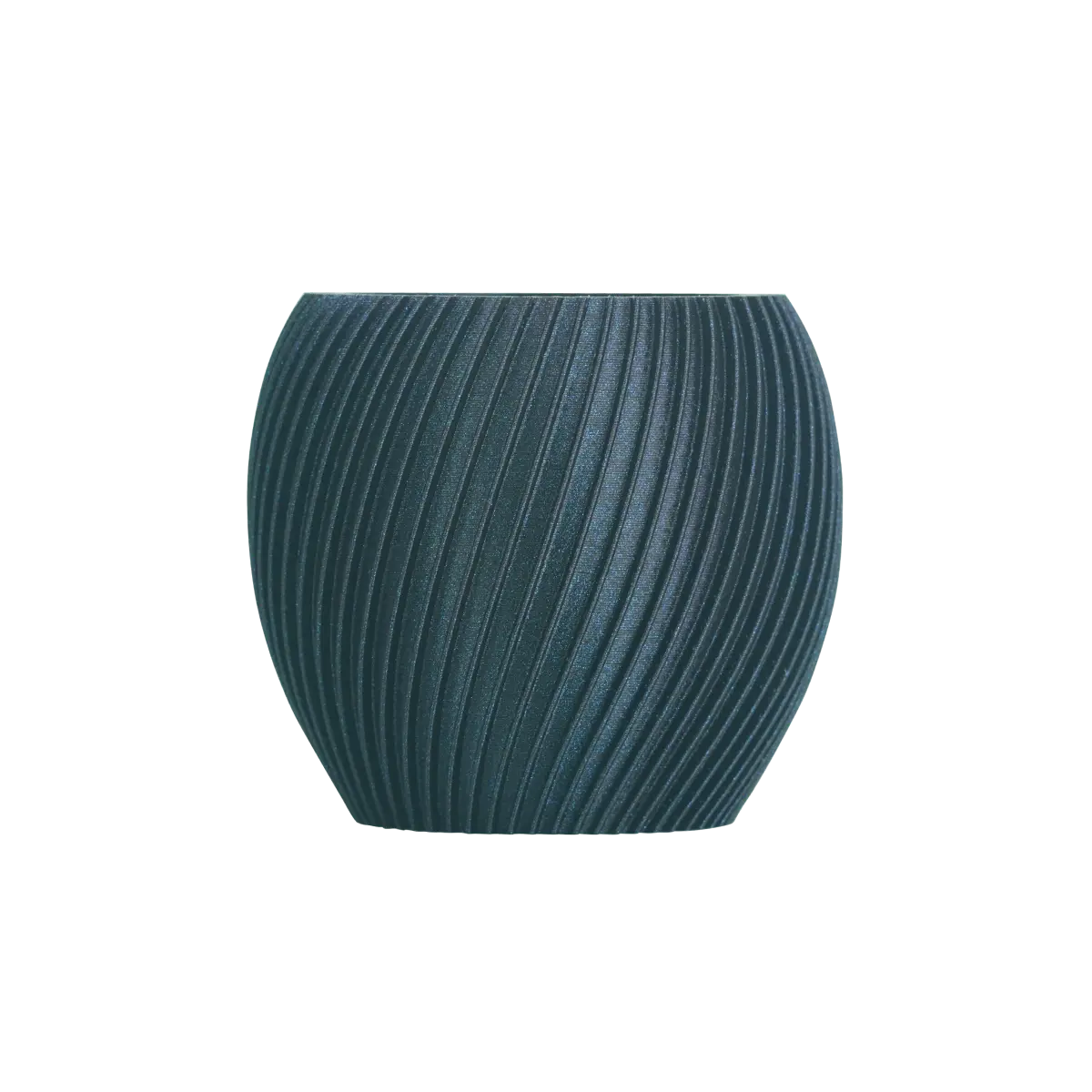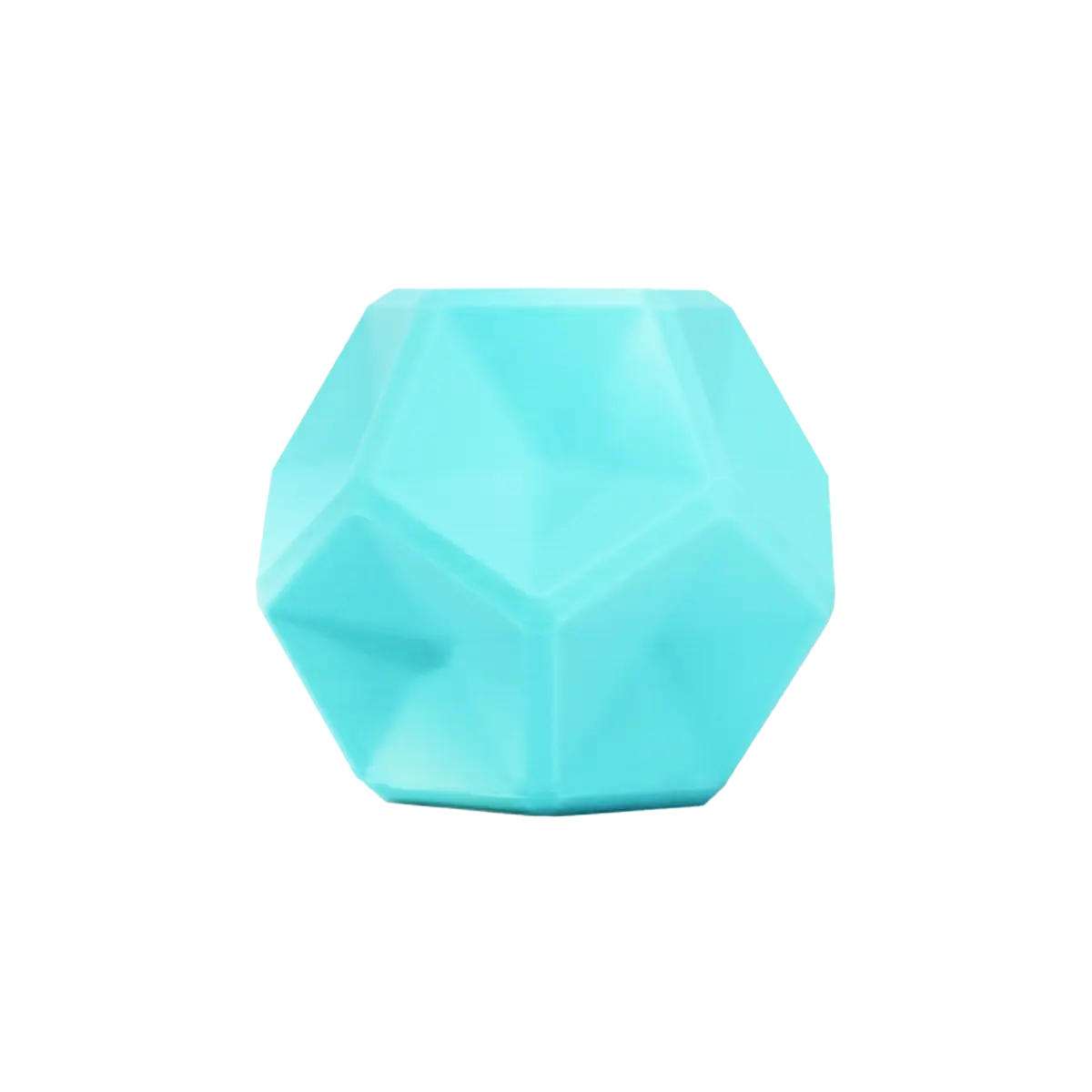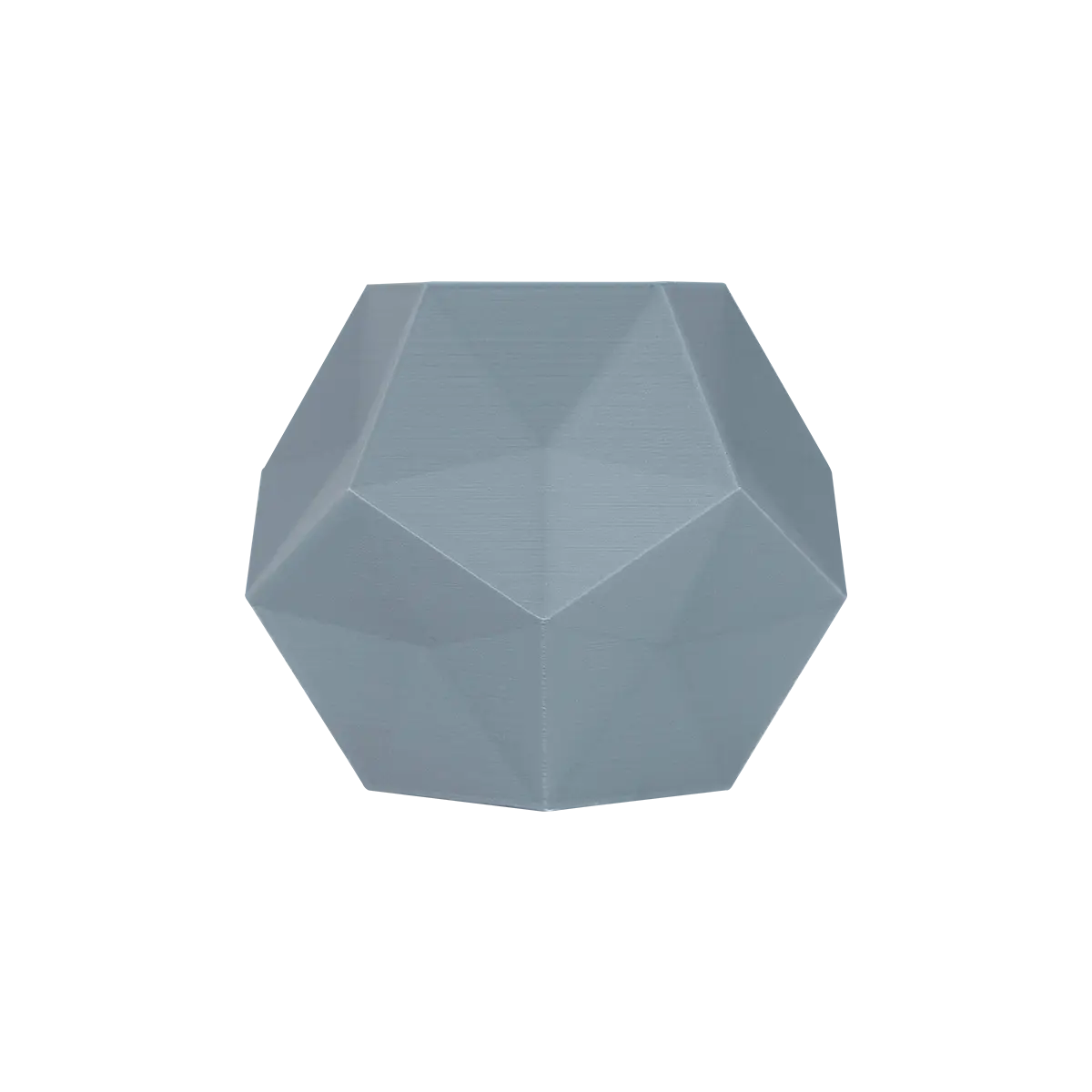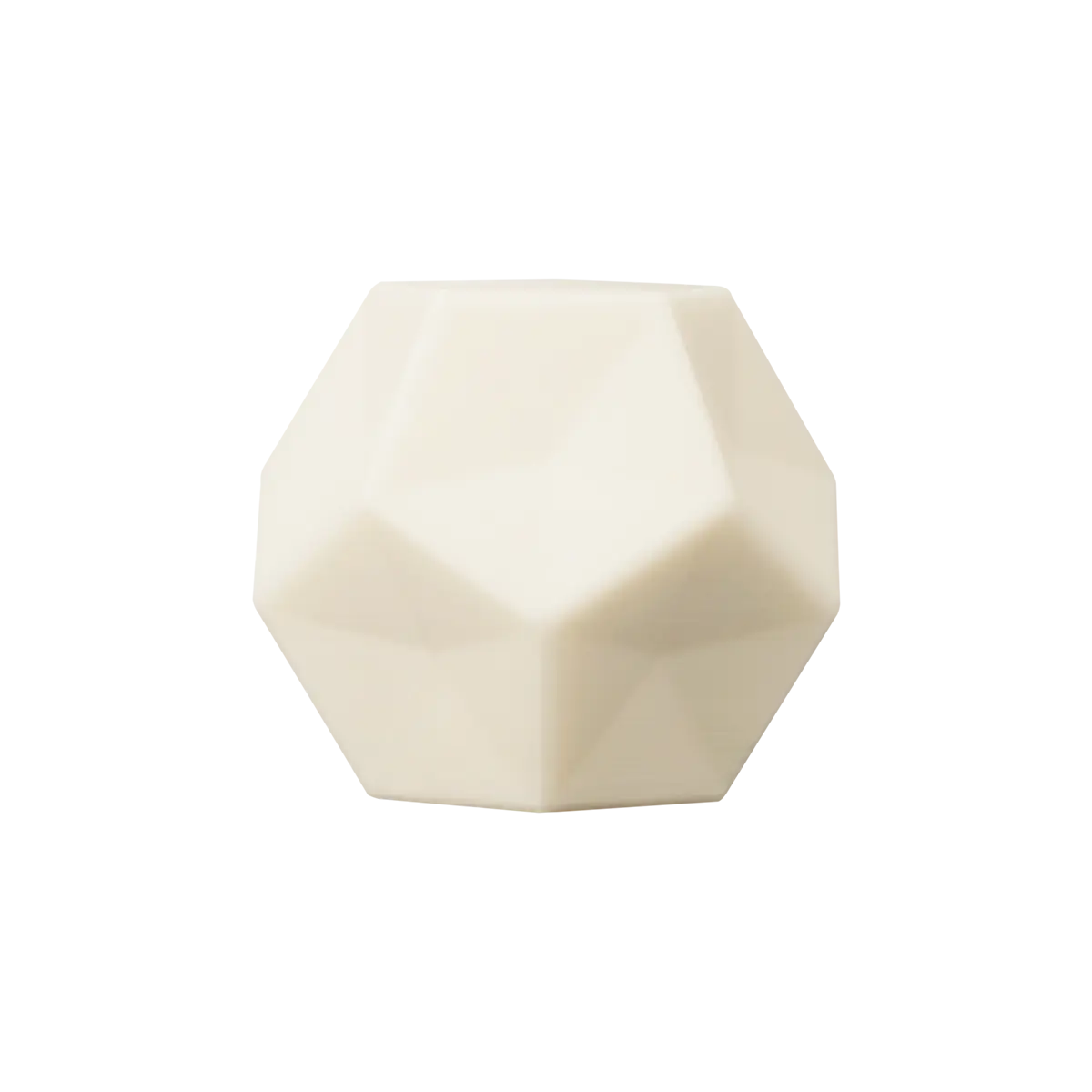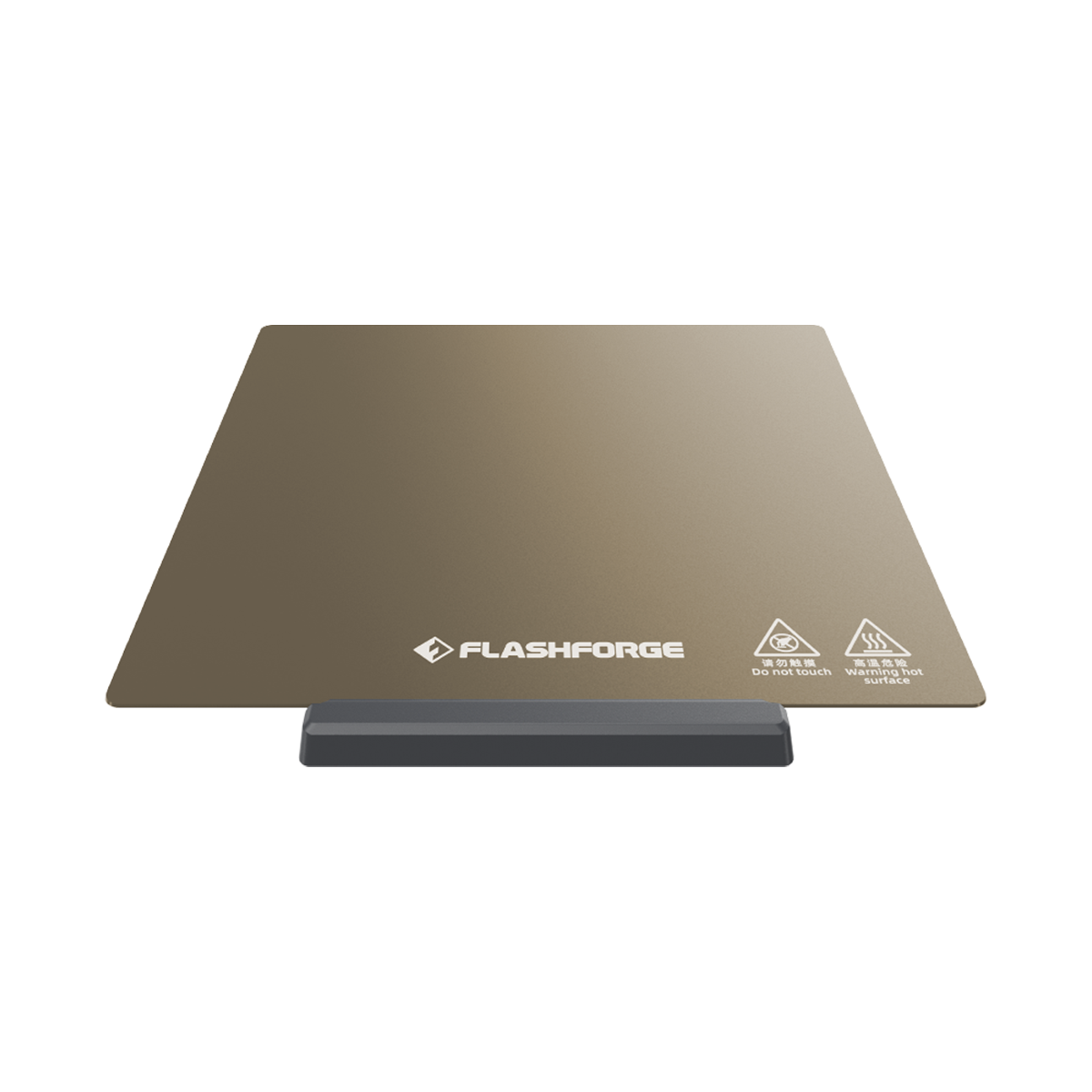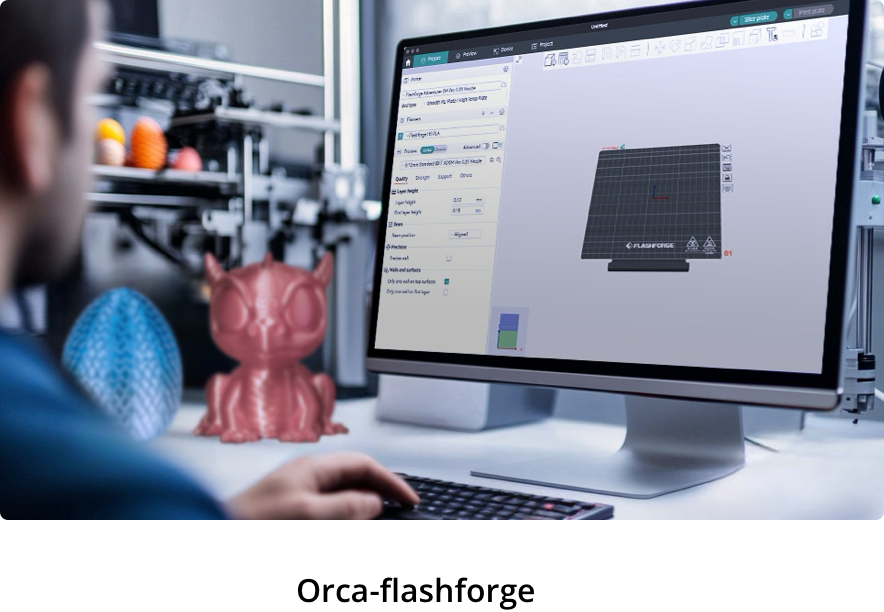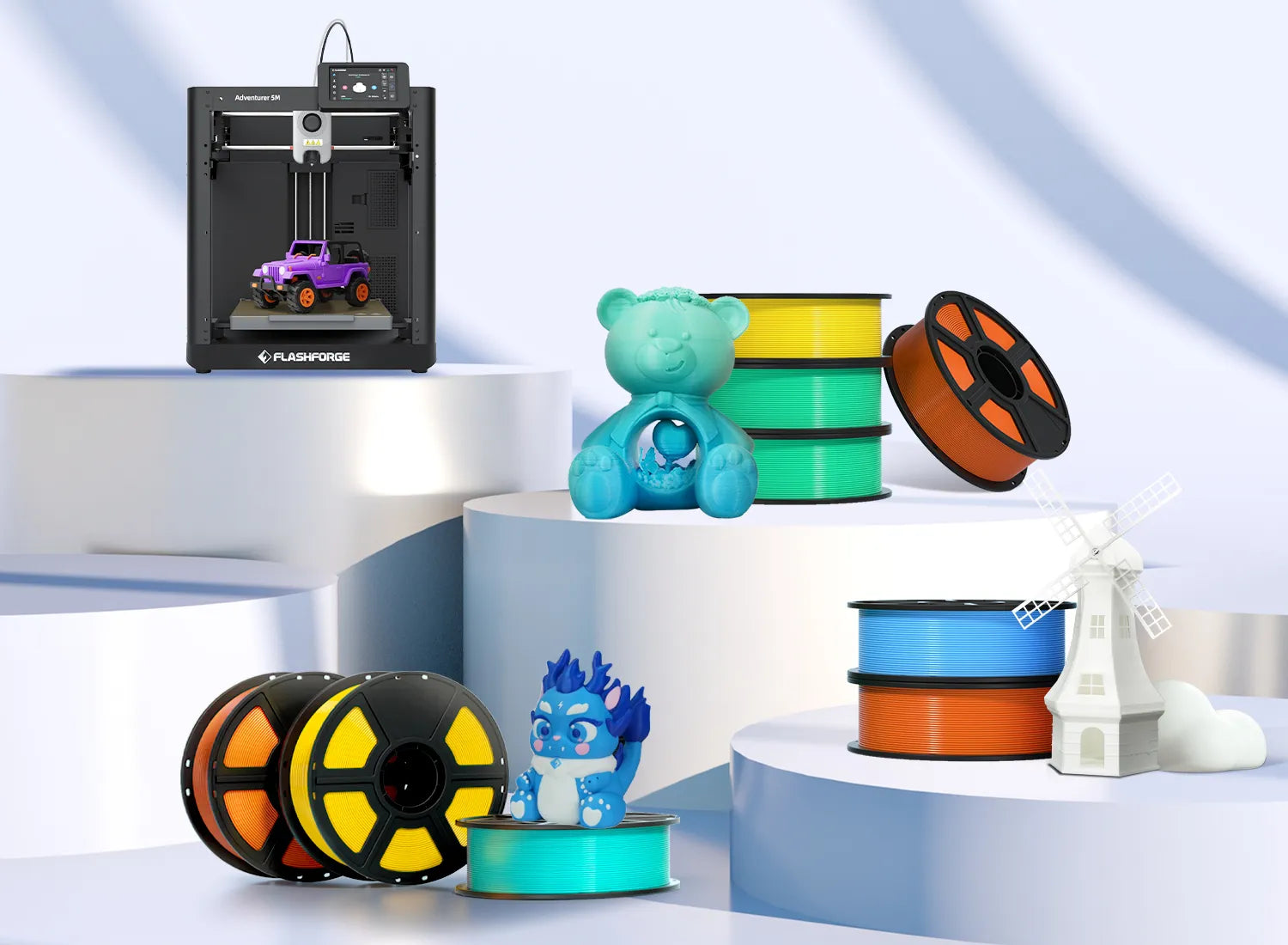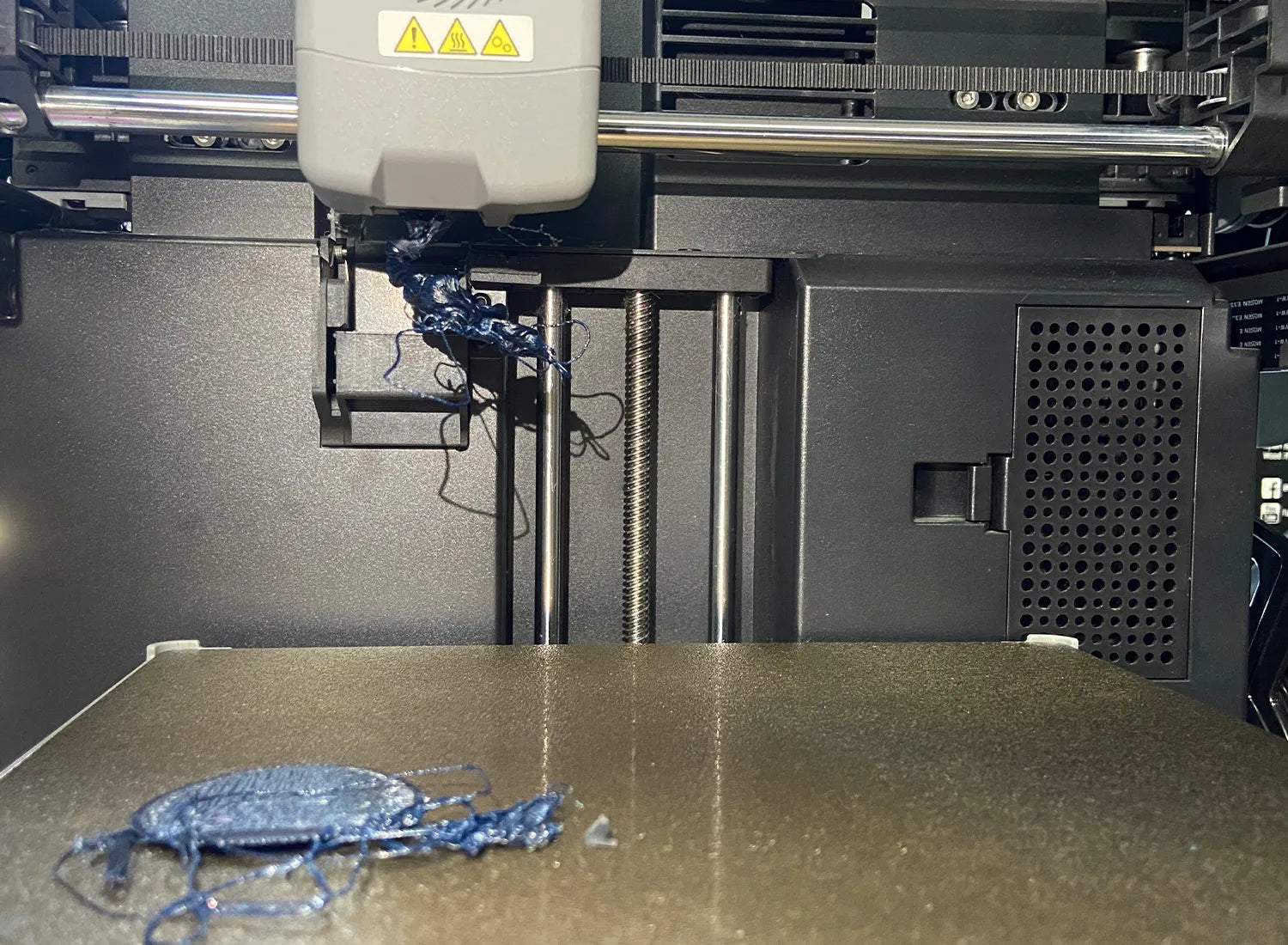Along with the rise in the accessibility and adaptation of 3D printing, it is essential to know about the materials involved in the process. The selection of appropriate
3D printer filament type is one of the most relevant decisions that should be made by a user. This guide will cover all you need to know, whether it is the basic principles or more advanced ones, to make proper decisions and produce the best results with your prints.
What Is 3D Printer Filament?
The material that is used in an
FDM 3D printer is known as a 3D printer filament. It usually arrives as a string or yarn-shaped rope and is derived from thermoplastics—materials that can be melted and then cooled, offering when heated and is solidified when cooled down. This process of melting and solidifying enables the printer to add layer upon layer to make a 3D object.
The filament is dragged into the extruder of the printer, where it is heated to its melting point, then a fine nozzle forces it to be deposited on a build plate. The printer lays a single thin marker at a time, and the dots are printed with one bit of data before creating a three-dimensional object. The substance is then cooled down until it becomes solid and can be used.
How to Choose the Best Filament for Your Needs
The number of materials is dozens, and this may be confusing to choosing the right filament. To come to a decision and narrow down the number of options, you ought to consider both the practical and technical requirements of your project.
Key Considerations
Some filaments are simple to print, yet not very robust. Some have better strength and temperature resistance, but they need a higher-level printer. This is something you want to achieve by balancing printability and performance.
Project Requirements
Consider what you will do with the printed item. Is it decorative, or does it have to be able to stand stress or heat? An ordinary keychain can be fabricated with PLA, but a usable tool or outdoor product may need PETG or ASA.
Printer Compatibility
Not all printed materials can be done with all types of filaments. As an example, such high-performance materials as polycarbonate or nylon necessitate high-temperature nozzles and heated beds. Also, be sure to check your printer specifications before attempting a new material
Ease of Use
When trying out 3D printing, I suggest materials such as PLA, which have low printing temperatures, minimal warping, and are reliable in general.
Cost
The other factor is the budget. Plain materials such as PLA and ABS are cheap. High-end filaments (e.g., carbon fiber blends) are much more costly, and possibly necessitate hardware improvements as well.
Post-Processing
Other filaments require finishing, such as polishing or painting. A material like
ABS can be smoothed using acetone to give it a professional finish. Others, such as PLA, have fewer options with regard to post-processing.
Recommendation
Choose Flashforge PLA Filament to have dimensionally correct-looking prints if you are new or want decent reports. Flashforge ABS Pro is stronger and has higher durability when more rigorous use is required.
Common 3D Printer Filament Types: Pros, Cons, and Uses
It is important to choose the right filament to get good outputs during printing. Understanding the most commonly used 3D printer filament types and their uses can help match your material choice to your project's technical and aesthetic requirements.
The most common filament that is used at home is PLA. It can be synthesized using renewable sources of corn starch and, hence, it is environmentally friendly. It also has low print temperature and minimal warp, which is a good one to start with.
Pros:
It is easy to print
Biodegradable and environmentally friendly
Does not need a heated bed
Cons:
Fragile to Casino
Low resistance to high temperatures
Best Applications:
Educational prototypes, ornamental objects, low prototypes
Recommended Product:
ABS Filament (Acrylonitrile Butadiene Styrene)
ABS 3D printer filament is renowned for its excellent mechanical strength and heat resistance, a strong and long-lasting thermoplastic. It is extensively used in construction and functional applications where structural quality is dependent on it.
Pros:
Strength and high impact resistance
Heats better than PLA
Is post-process capable (e.g. post post-process vapor acetone smooth)
Cons:
It needs a hotbed and an enclosed film to avoid warping
Produces smoke; it should be well ventilated
Best Applications:
Tooling, Enclosures, Mechanical, and automotive components.
Preferred Product:
Flashforge ABS Pro- the improved performance is with enhanced dimensional stability and reliability of the printed items.
PETG Filament (Polyethylene Terephthalate Glycol)
PETG lies between PLA and ABS. It is a blend between the ease of printing PLA with the durability and chemical-resistant qualities of ABS, which is why it is used in functional parts.
Pros:
Strength and flexibility High Strength Electrification Electrification High Strength
Water and chemical resistant
Minimal warping
Cons:
May have a stringing problem when not properly dialed in
Best Applications:
Mechanical uses, food packaging, and outdoor uses
TPU and Flexible Filaments (Thermoplastic Polyurethane)
TPU is a rubber-like and flexible filament that may be needed when elasticity is to be employed. Such materials also absorb impacts and spring back to normal.
Pros:
Very stretchable and long-lasting
Efficient shock damping
Cons:
Needs a lower speed of printing speed
A direct-drive extruder is best suited to print it
Best Applications:
gaskets, phone cases, wearables, robotic parts
Nylon Filament
Nylon is a high-performance material that is known to be flexible, wear-resistant, and tough. It has found high-end industrial applications.
Pros:
Great mechanical performances
Abrasion and impact resistance: High abrasion and impact resistance
Cons:
Extremely hygroscopic (very absorbent)
Needs high temperatures on the nozzles and has to be in a controlled environment
Best Applications:
Mechanical parts that are useful, gears, hinges, and jigs
Soluble Support Filaments (PVA, HIPS)
These filaments are utilized in the dual extrusion 3D printers to print support structures that can be dissolved in water (PVA) or limonene (HIPS), which makes the post-process simple.
Pros:
Enables printing of geometries and voids in internal shapes
For easy removal, that and getting rid of the main part intact
Cons:
High cost
Needs two extruders
Best Applications:
Bi-material prints, complex low-res prototypes, and support structures on very complex pieces
Specialty and Composite Filaments
Specialty filaments display specific properties to broaden the possibilities of standard thermoplastics in advanced applications or aesthetic requirements.
Carbon Fiber Filled Filaments
These filaments also have chopped carbon fiber reinforcements, which make them much stiffer and lighter as opposed to the unfilled versions.
Best Applications:
Brackets, chassis, quadcopters, and cutting templates
Note: Abrasion of fibers is prevented by using a hardened steel tip.
Metal-filled filaments
With mixes of PLA or ABS combined with small metal powders (bronze, copper, stainless steel), the resulting prints have the weight and look of the real thing.
Best Applications:
Artifacts, Jewelry, Decorative items
Note: The metallic finish can be further improved by post-processing (polishing, sanding) and can come at the expense of time.
Wood Filled Filaments
These filaments have real wood fibers, which produce a realistic wood-like print with an aroma of wood as well when it is printed.
Best Applications:
Ornamental and small furniture, architectural models
ASA Filament (Acrylic Styrene Acrylonitrile)
ASA is an equally good outdoor USE replacement of ABS; it is stronger and more durable, but resists UV better.
Best Applications:
Advertisement, collins, enclosures, auto parts etc.,
Note: Similar print conditions to ABS are needed and have the advantage of the enclosed print chamber.
Polycarbonate (PC) Filament
PC is one of the robust and highly heat-tolerant filaments that are preferred in engineering-grade applications.
Best Applications:
Tooling, high-load mechanical parts, and electronic housings
Notes: Extrusion temperature must be high (260300), and it needs an enclosed, heated build chamber.
Polypropylene (PP) Filament
PP has excellent chemical resistance, low density, fatigue strength, and is a semi-flexible filament with a mildly waxy surface.
Best Applications:
medical devices, food containers, and living hinges.
Note: Works very poorly with most build surfaces--use a specialty print bed or adhesive meant to work with polypropylene.
Beyond FDM Filaments: Resin-Based (SLA/DLP/LCD) Printing
Unlike FDM printing, which takes solid thermoplastics in the form of a filament, SLA (Stereolithography), DLP (Digital Light Processing), and LCD printing use liquid photopolymer resins that are exposed to light to become solid. These technologies create layer upon layer of models with mind-blowing depth and detail on the surface.
Benefits of Resin Printing
High detail resolution: Resin printers have the capability of producing finer detail than the majority of FDM printers, so it is an excellent choice when one needs a detailed piece.
Better surfaces: Components made in resin need less downstream processing in order to have a final level of professional finishing.
Good with micro-level parts: Good with microscopic parts, micro moulds, and precision parts.
Best Use Cases
Medical and dental models: medial and dental models: In such a case, high accuracy is a necessity
Jewelry casting and prototypes: Jewelry casting and prototypes: Jewelry casting and prototypes. Resin has the potential to show very fine detail in Jewelry casting and prototypes
Miniature figures and collectibles: very detailed prints, which are smooth in finishing
Although resin printing has the benefit of consisting of finer detail and surface finish, it may not be used instead of FDM in applications dependent on strength. The choice of resin and filament printing should be determined by what you want to prioritize most: the precision or the functionality.
Frequently Asked Questions (FAQ)
Which is better, PLA vs PETG better for my project?
PLA is even simpler and preferable on aesthetic models. PETG is more suitable for longer-lasting functional products that are exposed to heat or stress.
What are the cases when it is best to use either ABS or PETG and vice versa?
Select ABS when heat and post-processing (such as smoothing) are a priority. Use PETG when you need strength and flexibility to be easy to make out of.
What are the best 3D printer filaments to use?
Decorative: PLA, wood, metal-filled
PETG, ABS, Nylon.
Outdoor: ASA
Flexible: TPU
Complex geometries: PVA + PLA dual extrusion
Is PLA stiffer than ABS, or the opposite?
The ABS is stronger and more impact-resistant in general. PLA is stiffer and brittle.
What is the best way to store the filaments of a 3D printer?
Store in sealed bags or airtight containers with desiccant to prevent absorption of moisture, Nylon, TPU, and PVA in particular.
Conclusion
The big difference between printing with the right or wrong 3D printer filament types is enormous, and it is applied in terms of the quality, functionality, and durability of the prints. Whether it is simple filaments such as PLA and ABS or more advanced ones such as carbon fiber, they all have compromises and advantages.
When you are starting or need reliable filament to purchase, you can take a look at reputable brands such as we
Flashforge. We provide an outstanding line of materials, such as easy-to-use PLA and high-performance ABS Pro, which can be used in any application.
The 3D printer filaments uses and types will help you create the designs you have in mind accurately and with intent, regardless of your level of experience.








